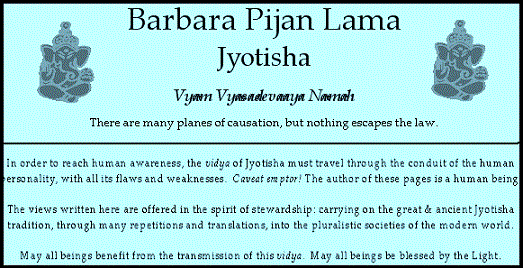
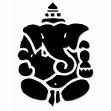

Amsterdam, Dutch Republic
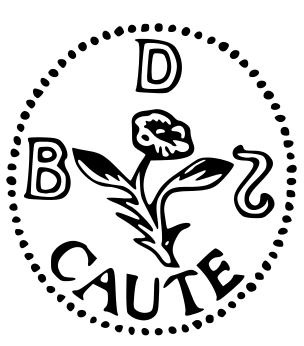
Baruch Spinoza's personal seal featuring his initials BDS, the rose, and Caute [cautiously]
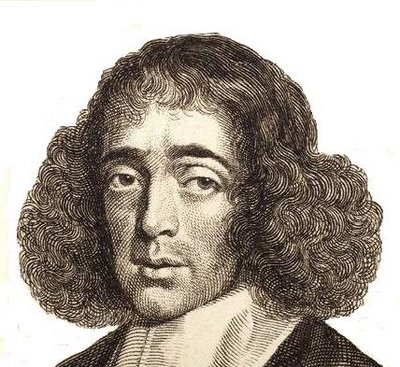
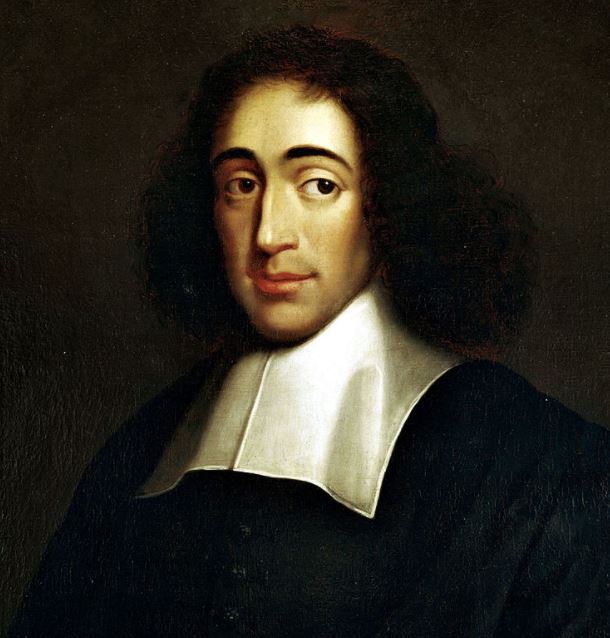
Baruch Spinoza dated 1665-CE, unknown painter [wikicommons]
Philosophy of God
Optical Instrumentation
author of Ethica Ordine Geometrico Demonstrata
https://en.wikipedia.org/wiki/Ethics_(book)
Mystical monotheism
a.k.a. Benedito de Espinosa
a.k.a. Bento Despinosa
a.k.a. Benedict Spinoza
"Bento"
Earth-birth Wednesday-24-Nov-1632
dematerialization 21-Feb-1677 [Gregorian]
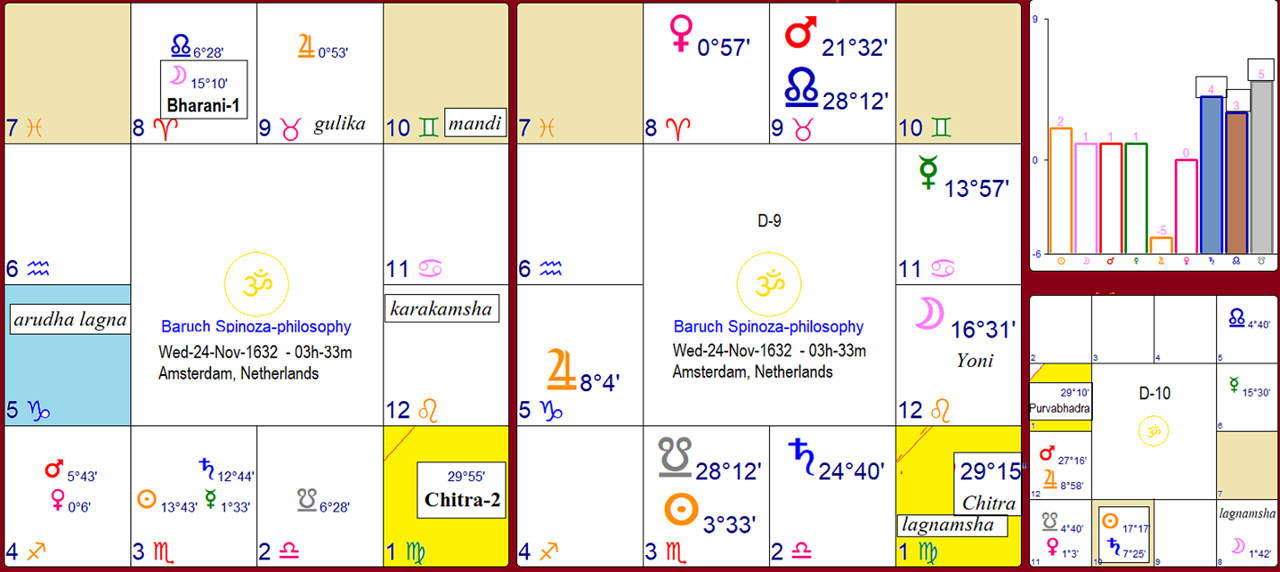
Renowned Grinder of Optical Lenses for Microscopes and Telescopes
Philosopher Divine
1632-1677-CE
Baruch Spinoza
birth data from en.wikipedia.org/wiki/Baruch_Spinoza
tentatively rectified by BP Lama Jyotishavidya
charts + graphs + tables = produced by Shri Jyoti Star - www.vedicsoftware.com
- adapted by BP Lama
Rising Nakshatra
Masculine Public-Figure Examples
Citthirai - Visvakarma - Azinech - Alaraph - Arista - Dana
BPL COMMENTARY
For Chitra - Tvastri births of a masculine valence, the condition of kinesthetic, direct, yang-energy, forward-pushing bhratru-karaka Mangala may considerably affect the outcome.
For those born into the Mangala-ruled paradigm of Visvakarma, brother-figures, warriors, hunters, athletes, dancers, champions, challengers, inventors, explorers, dis-coverers, engineers, builders, drivers, drillers, diggers, exploders, aggressors, pursuers, competitions and battles may be especially influential.
Guided by instructors from civilizations of Spica. their purpose is architectural engineering and crafting of beautiful, functional, and artistic alliances, arrangements, and designs.
Designs + Arrangements
[Competitive Champion Kuja]-ruled Chaitra fellows have a knack for competition. Goal-oriented and kinetic in building, patterning Tvastri, they strive for dominant power in engineering, artisan mechanics, architecture, and applied design arts such as skilled handcraft. As authors, chaitrika often illustrate their works with fine drawings. Tvastri-born have a natural affinity for tools, engines, driving, building.
Kanya pada 1-2 express Kuja's rulership of 3-writing + 8-mystical transformations, while also displaying the frustrating tension of chatty Budha versus active Kuja. Literary Budha plays a stronger role for pada 1-2, producing scholars and writers who argue about architectonics, engineering design, color values, and mechanics. Pada 1-2 = also skilled in handcraft and may be professors-cum-tradesmen, fine-arts painters, model-builders, or manually gifted musicians.
[Tula - Vanika] pada 3-4 express Kuja's rulership of 2-collections, assets + 7-contractual equity. Shukra's bargaining behavior and financial skills play a stronger role for pada 3-4, who enjoy the mutual attractions of Shukra-Mangala. In music, arts, and engineering, they pursue harmonious arrangements. They often play stringed instruments, and write beautiful songs. Chaitrika pada 3-4 can be found in the design world, in financial negotiations, and in dynamic meditator roles.
Themes of productive touch including artistic design, musical instruments, mechanical engineering, and crafting of dynamic arrangements contextualize Vismakarma's terrestrial experience. Incoming drishti from Kuja can mobilize their progressive, pioneering actions. Also applies to Chandra in Chitra - Spica.
QUOTATION Chitra
from Shil-Ponde. (1939). Hindu Astrology Joytisha-Shastra. p 84
" Chitra natives are quiet, thoughtful, and profound.
Very slow in movement and of great dignity in bearing and manner.
-
they like to read books on serious and philosophical subjects.
they make good students in their youth.
they are also extremely clever with their hands,
-
which are strong, supple, and dexterous.
they like to do things or fashion things with their hands
-
and could be sculptors or artists or surgeons."
[end quote, Shil Pondey, 1939]
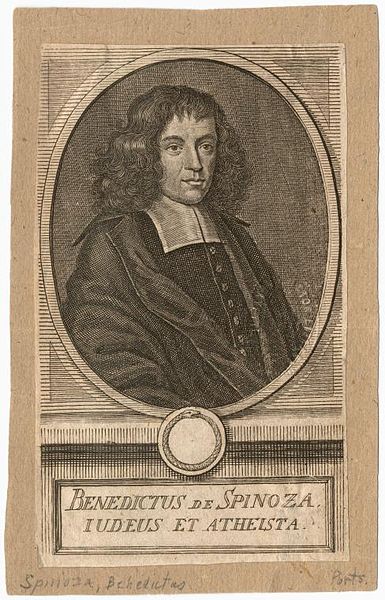
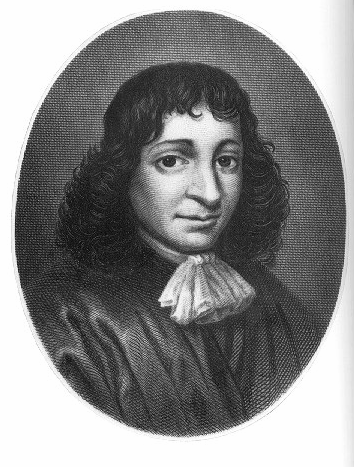
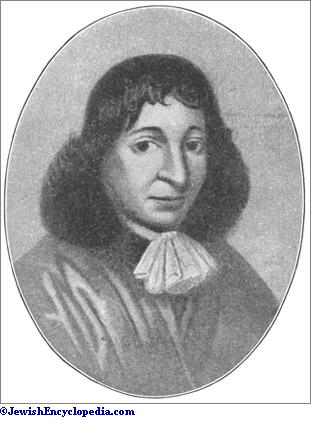
Biographical Details matched to Vimshottari Dasha calendar
-
Ethica ordine geometrico 1632-1677 Baruch Spinoza
[Shukra Mahadasha] = [age birth until age 17.5]
-
[Shukra-Vṛścika] = [Shukra-3] = [ātmakāraka] + [Mūla-Shukra-yuti-Mangala-Mūla]
Wed-24-Nov-1632 = Earth-birth into a family of Portuguese Jewish merchants in Amsterdam, the Netherlands * Shukra-Shukra svabhukti * Shukra rules 9-theory, philosophy
1638 [BS age 6] grieved the bio-decease of mother via tuberculosis * Shukra-Rahu bhukti * [Somana-yuti-Rahu]
1650 [BS age 18] grieved the bio-decease of elder brother Isaac. Mandatory exit the yeshivah course of studies. Begins to work in the family business. * Shukra-Chandra bhukti * Chandra rules 8th-from-11th-from-Chandra = decease of elder sibling
[Surya Mahadasha] = [age 17.5 until age 23.5]
-
[Surya-Vṛścika] = [Surya in bhava-3] = [vargottamsha] + [Maitra-Surya-yuti-Budha-Viśākha] + [Maitra-Surya-yuti-Shani-Maitra]
28-Mar-1654 [BS age 21] grieved the bio-decease of father Miguel Espinoza, who was killed by a bullet in pirate maritime crossfire. Along with younger brother Abraham [Gabriel] young Bento assumes control of the family business. * Surya-Budha bhukti * Budha-business rules 2nd-from-pitribhava
[Chandra Mahadasha] = [age 23.5 until age 33.5]
-
[Chandra-Mesha] = [Chandra-Bharani] = [Chandra in classroom-8] + [Bharani-Somana-yuti-Rahu-Aśvini]
27-Jul-1656 [BS age 23] ostracized via writ of herem * ending his relationship with the family synagogue and its congregants * Chandra-Chandra svabhukti * [Chandra in classroom-8] = [Somana-yuti-Rahu]
https://en.wikipedia.org/wiki/Herem_(censure)
1659 [BS age 26] Moves from the Amsterdam synagogue neighborhood where his family had lived, to Rijnsburg in the Leiden University area. Starts a to-be-highly successful lens-grinding business. Spinoza's hand-polished lenses would be prized throughout Europe, especially for use in telescopes and microscopes. * Chandra-Rahu bhukti [Somana-yuti-Rahu] chandra rules 11-earnings * [Rahu in bhava-8] discoveries, revelatory observations via sharply clear lenses
1662 [BS age 29] anonymous publication: Tractatus de Intellectus Emendatione [= On the Improvement of the Understanding] * Chandra-Budha bhukti * Budha publications
1663 [BS age 30] published: Principles of Cartesian Philosophy = the only work printed under his own name during his lifetime * Chandra-Budha bhukti * Budha-3 publications
1665 [BS age 32] having survived by a small pension from a famous supporter, and having sent each chapter to friends who chapter-by-chapter translated his original Dutch text into Latin, Spinoza finished The Ethics.
- This work was so incendiary, and so much controversy was anticipated, that the book was not published in any version nor in any language. Except for his small band of devoted intellectual comrades and translators, no member of the public had read it. * Chandra-Surya chidra-dasha * Surya-3 cohort, publications,Surya-3 writing rules 12-sanctuary, enclosure, invisibility
[Mangala Mahadasha] = [age 33.5 until age 40.5]
1670 [BS age 38] relocated to the central financial capital, the Hague * Mangala-Budha bhukti * Budha karmesha -lagnesha + Budha business
1670 [BS age 38] published anonymously the impassioned plea for pluralism and tolerance Tractatus Theologico-Politicus. Spinoza's anonymity did not last long. * Mangala-Budha bhukti * Budha publications,
1672 [BS age 40] Spinoza's long-time funding agent, friend, and patron Jan de Witt, is assassinated by knife * Mangala-Surya bhukti * Surya rules 2nd-from-11, decease of funding-friend
[Rahu Mahadasha] = [age 40.5 until decease age 44]
-
[Rahu-Mesha-Aja] = [Rahu in bhava-8] + [Bharani-Somana-yuti-Rahu-Aśvini]
1673 [BS age 41] Spinoza received and refused an offer of professorship at Heidelberg University. * Rahu-Rahu svabhukti
1674 [BS age 42] Spinoza's book Ethics is officially condemned as heretical by Church-State authorities in the Netherlands * Rahu-Rahu svabhukti [Rahu in bhava-8 threats, dangers]
1676 [BS age 44] the young diplomat Gottfried Leibniz came secretly to the Hague to meet the esteemed and dangerous Spinoza. During the visit, Leibniz read Spinoza's unpublished manuscripts. Many believe that after Spinoza's death, Leibniz subtly repackaged Spinoza's original ideas. * Rahu-Guru bhukti * Guru-9 philosophy rules 12th-from-Chandra, espionage
en.wikipedia.org/wiki/Gottfried_Wilhelm_Leibniz
24-Feb-1677 [BS age 44] blessed liberation from the Earthen-body in the presence of his physician, from lung disease [grief] caused by inhalation of crystal dust from his lens-grinding work * death from blood infection of the lungs * Rahu-Guru bhukti * maraka Guru rules 7
Posthumous
1677 posthumous publication of the daring, brilliant, occult-insight Ethica Ordine Geometrico Demonstrata
[The Ethics] in which God is proposed to inhabit all reality via natural properties * Rahu-Guru bhukti ++ Guru rules 7- fulfillment of pre-incarnational contract
en.wikipedia.org/wiki/Ethics_(book)
1677 posthumous publication of Hebrew Grammar * Rahu-Guru bhukti ++ Guru rules 7 fulfillment of pre-incarnational contract
Distinctive Features of the Nativity
-
Ethica ordine geometrico 1632-1677 Baruch Spinoza
[Sparkling Splendid Surya]
pitri-karaka [father] -- jyoti-karaka [light]
[retreating-contemplative vyaya-pati for Kanya indriya-lagna]
- check Kuja + Kuja-drishti to source Surya's penetrating authenticity, mysterious intelligence, transformative decisions
[intelligent center of transformational information ]
[brightly focused on shrouded clandestine vyaya-pati messaging]
[confident manager of invisible emergency drama]
[dangerous commercial business engages distant lands]
[transmission of catastrophically brilliant clairsentient insight]
...
[evolving-disguising Anuradha-4] = [vargottamsha] [navamsha Surya-Vrischika] intuitively confident transformational discovery
+ [Maitra-Surya-yuti-Budha-Viśākha]
+ [Maitra-Surya-yuti-Shani-Maitra]
-
[Surya-Vṛścika] [Maricha - particle of light] * brightly charismatic confidence of Center-stage Surya radiates through the penetrating transformative rashi of Mangala
-
[Surya in bhava-3] center of commerce * mercantile intelligence * smart reports * dramatic instructional delivery * creative descriptions * sparkling retinue * splendid games of manual-skill * self-referential announcements * admirable handcraft * cinematic genius * smart technology * focus on teamwork * entertaining explanations * administrative entitlements * confident writing * eye on process management * regal messaging * shining star of daily discourse * brilliant gesturing * task-oriented father may be a transactional businessman, clever craftsman, explainer, communicator
-
[Surya-yuti-Budha] confidently conversational * brightly explaining messenger * entitled to discuss * creatively intelligent sibling-cohort * discursive father-figure * gestures conduct the spiritual rays of the Sun * radiantly descriptive * articulate in drama * skillful game-player * self-confident announcements * talks about ideals * narrative of power-politics * recites love poems * describes divine romance
-
[Surya-yuti-Shani] confidently lawful * bright regulator * entitled to impose order * politically intelligent authority-figures * radiantly systematic * Sober hierarchical strict father-figure * cautiously orderly expression of the spiritual rays of the Sun * limited entertainments * creatively disciplined * stern father may be bureaucrat, official, pragmatic gambler
OUTCOMES - MAGNIFICENT MARTANDA
self-reflexively announcing, brightly messaging, intelligently editing, confidently translating, glittering interpretation, regal style of gesture, communicative intelligence, radiantly descriptive, politically collaborative, splendidly explanatory [Surya in bhava-3] rules
-
12 - enclosures, the bed, fantasies, privacy, interior spiritual guidance, clandestine undertakings, intuitive awareness, non-linear conceptual undertanding, concealment, seclusion, invisibility, dissolved identity, meditation, contemplation, dreamworlds, astral plane, imaginary scenarios, sanctuary sleep, distant lands, distress of the avowed partner
CAREER - SPARKLING SURYA
[Surya-yuti-Budha] +[Surya-yuti-Shani] in [3 writing-publication] occupies the revolutionary, emotionally turbulent, perpetually transformative, trauma-inducing 8th-from-Chandra
[Surya in bhava-3] rules
- 12-meditation, contemplation, clairsentient symbolic understanding
- Surya permits Retreat into Interiority, private Study
Surya is harshly oppressed by Surya's arch-enemy, the secretive, punitive, restrictive agency of social order, VṛścikaShani. Surya is also responsible for the combustion of Shani and Budha. Shukra escapes the burn.
FATHER
- Spinoza's father hailed from a long line of commercial agents
- His dad and his grand-dad were international shipping merchants [3]
[trading Surya-yuti-Shani. The family import-export business was ongoing but never highly successful [Shani losses, limitations] .
28-Mar-1654 [BS age 21] Surya-Guru bhukti * Guru rules 2nd-from-Surya
- father Miguel Espinoza was killed by a bullet in pirate maritime crossfire. Along with younger brother
- young Bento along with his brother Abraham [Gabriel] assumes control of the family business [3]
[Surya-yuti-Budha] commerce + [Surya yuti Shani] social obligation
- During the interminable European sea-trading wars, when Baruch was 21, his fruit-importer father was traveling aboard a trading ship that came under attack by pirate gunfire.
- At age 21, elder son Baruch Spinoza thus inherited responsibility to operate the family business.
[Comfortable Caretaking Chandra]
matrikaraka [mother] -- garha-karaka [village]
[friendly-economic vriddhi-pati for Parthya indriya-lagna]
- check Kuja + Kuja-drishti to source Chandra's competitive feelings, conquesting rhythms, engineering sensibilities
[comfortable with physically disruptive change]
[sympatheticly pushes into rejuvenating crisis battles]
[sentimentally attuned to vigorously initiatory actions]
[forward-moving rhythms stabilize hidden feelingss]
[life-force gives impetus for emotional healing]
[needs to feel thrust of catalytic rebirth]
[soothed by gainful vriddhi-pati identity transformation]
[volatile embodied feelings may suddenly stop-and-start]
[undulating noble warrior of social-participation linkage vriddhi-pati]
[intuitively parental pioneering populism vriddhi-pati]
[eruptive mood cycle spectrum from vitality to terror] [sensitively attuned to aggressive shocks]
- [at some juncture in the lifespan, one's old pioneer identity utterly dies, starting a catalytic rebirth into a new social network + new conquests]
[traumatized champion mother may be inscrutably moody]
[athletic socialite mother's gridwork may suddenly fluctuate]
[friendly, goal-oriented vriddhi-pati mother may alternate as disguised challenger, mysterious knightly aristocrat, unpredictable inventor]
...
[demonstrating-displaying Bharani-1] + [navamsha-Chandra-Simha] intuitively sensitive to entertaining political display
[ātmakāraka rhythm, ancestry, pulse, seasonal cycles, oceans, maritime environments, parents, undulating patterns]
+ [Bharani-Somana-yuti-Rahu-Aśvini]
-
[Chandra-Mesha] comforted by forward pursuit * settled into warrior rhythms * needs vitality
-
[Chandra-Bharani] needs to carry valuable burdens * safeguards the treasuries * protects precious values
-
[Chandra in classroom-8] comfortable with crisis * familiar with catastrophe * unpredictable mother * feels the pulse of cyclical rebirth * soothed by secrecy * consoled by calamity * sensitive to danger * revolutionary sentiment * accustomed to frequent upheaval * seeks deeply rhythmic initiation * acculturated to masked exploration * occult sensitivities * needs eruptive energies * nourished by non-disclosure * emotionally attuned to trauma * undulating shakti-shocks * mother may be a mystic, healer, concealer, agent of disguise
-
[Somana-yuti-Rahu] emotionally expedient * sensitive to exotic folks * risk-rewarding mother * over-stimulated feelings * unconventional parenting style * comfortable in mixed-culture environments * undulating desires * craves passionate nurturing * feels exceptional
OUTCOMES - ANCESTRAL SOMA
sentimentally undisclosing, emotionally secretive, caretaker in dangerous situations, needs chaotic feelings, securely grounded through disastrous upheaval, anchored into sudden emergency response, sensitive to disguised dependencies, protected by camouflaged assets, sense of having hidden empowerments [Chandra in classroom-8] rules
-
11-fruitful revenues, interconnected income, profits, material achievement, social networking, friendships, community linkage, fan-clubs, mass participation gatherings, collectivism, marketplace gridworks, distribution, association, populism, economic systems, fundraising, gains-and-goals, awards for work accomplished, health of the enemies
CAREER - CARETAKING CHANDRA
- [folk reputation 10th-from-Chandra = regulatory politics, class-conscious drama, lawful entitlements, normalized gambling Makara - Draco 5]
BS identity was radically when he was banished from Jewish society via the write of cherem. He became virtually dead to his fellow Jews. No one was allowed to speak with him or recognize his person in any way.
BS responded by rebirthing himself. No longer concerned with managing his family's shipping business, he developed a specialized lens-grinding workshop. Spinoza's lenses for both microscopes and telescopes were prized throughout Europe.
He still had to write anonymously for fear of attack by the Christian government's religious authorities. However, freed of the outdated rules that controlled his previous actions, he now acted as an independent writer and craftsman without regard to the past.
MOTHER
Little Bento was born to his father's second wife. Tragically, at his age 6, mom died from water-borne typhoid [Chandra water]
Spinoza = often identified as the first famous example of a secular Jew in Europe.
Amplifying the disturbance to Soma's cultural roots, Chandra-yuti-Rahu suggests a lifetime of emotional upheaval and a barrier-bending, taboo-twisting sensibility which causes an interrupted sense of belonging.
His life plan would seem to have provocatively prevented conformity and reduced stability in order to exaggerate the patterns of revelation [8] in his magnificent philosophy.
MARRIAGE partnership emotional equity support expectations
- 7th-from-Chandra-8 contains Ketu-2
- among other cultural anomalies, bento remained unmarried [Ketu]
[Competitive Champion Kuja]
bhratru-karaka [brother] -- virya-karaka [virility]
[busy-communicative sahaja-pati for Kanya indriya-lagna]
[mysterious-rejuvenating randhresha for Kanya indriya-lagna]
= [Kuja Dosha for alliance-1]
-
check Guru + Guru-drishti to source Kuja's vitally principled, kineticly enthusiastic pushy, doctrinally guided actions
[philosophical warrior pursues cheerful household routines]
[secures foundational commerce sahaja-pati via global shipping or transport]
[doctrinal teaching within safely protective walls and fencing]
[steadily promotes cultural worldview renewal randhresha within local ethno-settlement]
[vigorous defender of established sacerdotal rituals]
[propels humanistic conduct in the homeland]
[forward-push toward educational explanation sahaja-pati of principled beliefs]
[restless but wisely guided in school]
[childhood home may be embattled yet grounded in sacred understanding]
[believing brother-cousins or co-workers may be optimistic builders, local preachers, catechizing schoolteachers, esperant shipping captains, priestly drivers]
...
[financial-evaluating Mūla-2] = [navamsha Mangala-Urisha] intuitively competitive innovative finance
+ [Mūla-Kuja-yuti-Shukra-Mūla]
-
[Mangala-Dhanus] vigorous development of humanistic worldview * energized inspiration * thrust toward doctrinal expansion * proactive teaching-preaching * promotes philosophical globalism * champion of broad understanding * pursues patronage
-
[Mangala in bhava-4] promotes local transport * champion of construction * mechanized vehicles * underground dig-drill-dive-mine * lively push toward fast driving * school bully [nichha only] builds foundational infrastructure * invigorating patriotism * domestic conquests * pursues home ownership * defensive action * restless in school * energized farming * tillage-plowing-plunder * fights in marine defense * pushy parents * competitive force in the childhood home
-
[Kuja-yuti-Shukra] dual sexuality * energized bargaining * dynamic trading * masculine force joins feminine allure * kinetic sensuality * productive arrangements * competitive mating * vigorously balance-seeking in partnership * pursues diplomatic resolutions * innovative arrangements
OUTCOMES - MOVING MANGALA
dynamically home-building, competitively defensive, vigorously patriotic, forward-pushing educator, protectively dominating, forcefully foundational, kinetically localized, pioneering transporter, energetic farmer, innovative colonizer, champion of the homeland [Mangala in bhava-4] rules
-
3-communications, messaging, sermons, scripts, radio-television, media-products, Writing and Publishing, letters of correspondence, announcements, planning, schedules, sales, marketing, documentation, reporting, cohort, entourage, committee-work, iterative stepwise process, manufacturing, commercial business, instruction, explanation, discussion, diagrams, labeling, event management, signage, training, itinerary, tours
-
8-unexpected eruptions of regenerating force, occult initiation, mystical revelation, shocking intervention, opaque empowerments, invasive surgery, intensive healing, evolution, violent explosion, sudden identity change, rejuvenation, recycling, rebirth, hidden assets, upheaval, undisclosed secrets, transformative events, discovery, in-laws of first marriage, health of younger sibling-cousin
CAREER - COMPETITIVE KUJA
-
3-communications, messaging, writing, publications, letters of correspondence, commerce, announcement, planning, cohort
- 8-mysteries, revelation of terrible secrets, sudden identity change, rejuvenation, recycling, rebirth, hidden assets
Kuja rules 3-publications = occupying the revolutionary, threatening 8th-from-Chandra containing [Budha-yuti-Shani] + Surya
His philosophical publications were considered life-threateningly dangerous
[Busy Bantering Budha]
jamayah-karaka [sibling] -- sandesha-karaka [message] -- shisya-karaka [student]
= [svabhava]
[energized-identifying lagnesha for Kanya indriya-lagna]
[dutiful-hierarchical karmesha for Kanya indriya-lagna]
- check Kuja + Kuja-drishti to source Budha's penetrating analysis, rejuvenating discourse, narrative of shocking discovery
[communicates detailed mystical procedures]
[identified lagnesha with crisis management]
[transmits secret transformative messages]
[discusses emergency leadership karmesha skills]
[delivers instructions for sudden identity change]
[talks about dangerous threats]
[explains rejuvenating initiation processes]
[sibling-cousin may be healing-revitalizing product sales agent, recycling administrator, chief of secret business process]
...
[rhythmic-routine Viśākha-4] = [navamsha Budha-Karkata] intuitively explaining customary defensive protections
+ [Viśākha-Budha-yuti-Surya-Maitra]
+ [Viśākha-Budha-yuti-Shani-Maitra]
-
[Budha-Vṛścika] secretive communications * articulation of transformative process * emergency pronouncements * delivers messages about dangerous situations * describes mystical initiation * discusses undisclosed mysteries * articulately defined masking * gives instruction for penetrating procedures * expertly detailed disguise * hands-arms-shoulders make occult gestures
-
[Budha in bhava-3] narrative of cohort collaboration * chatty siblings * articulate announcements * discusses commerce * instructions for management * conversations about information technology * clever programming * logical reporting * talks about daily business * handles information * skillful printing * scripted dialog * text instructions * writes lyrics * detailed media-messaging * communication tactics * explains marketing * quick manufacturing * descriptive process * signaling gestures
-
[Budha-yuti-Surya] illuminating explanations * entertaining chatter * central roles in communication * brightly clear descriptions * dramatic enunciation * confidently delivers instruction * articulation of radiant certainty * political messenger * talkative father-figures
-
[Budha-yuti-Shani] explainer of rules * dictates about system requirements * regulatory roles express communication skills * lawful planning * slow scheduling * conventional conversations * message of institutional order * mature management * makes necessary announcements * cautious gestures * talkative elders
OUTCOMES - BANTERING BUDHA
commercially adept, administratively detailed, skilled manager, articulately gesturing, descriptive writer, mercantile mentality, cohort communicating, committeeworker, defining announcer, specific explanations, chatty conversations, handcraft manufacturing, neighborly meeting [Budha in bhava-3] rules
-
1- distinctive attributes of personality, dense material incorporation, individual personification, earthen embodiment, physical integrity, kinetic energy, dance, style of movement, athletic prowess, muscular mobility, unique character, kinetic vitality, circumstances of birth, forward push, tangible appearance, coherent social identity
-
10-career, profession, dignity, regulatory roles, governance duties, social authority, symbolic recognition, iconic visibility, leadership responsibility, top status, reputation, commanding positions, honor, high regard, public respect, executive power, elite rank, lawful imposition, organizational director
CAREER - BUSY BUDHA
Handcraft-3 + uchcha-Shani technical balance.
BS was a skilled lens-crafter for microscopes and telescopes. His lenses were sought by scientists throughout Europe
Budha rules 3rd-from-Chandra publications
[Budha-yuti-Surya + [Budha-yuti-Shani] in [3 writing-publication] occupies the revolutionary, emotionally turbulent, perpetually transformative, trauma-inducing 8th-from-Chandra
Budha lagnesha
Spinoza is considered by many historians to represent Europe's first example of a secular Jew. His identity was self-defined by his thoughts [Budha] not by his faith community, nor his his ritual worship habits, nor his tangible appearance.
Spinoza produced some of the highest-quality, most detailed descriptive, instructionally complete, intellectual philosophical writing of the European Enlightenment. But always a pragmatist, [Budha-yuti-Shani] he kept his day job.
[Generous Growing Guru]
dhava-karaka [husband] -- bahuta-karaka [variety]
= [svabhava]
[homebound-anchoring bandesha for Kanya indriya-lagna]
[contractual-bargaining jaya-pati for Kanya indriya-lagna]
- check Shukra + Shukra-drishti to source Brihaspati's pleasant generosity, evaluating expansion, cherished beliefs
[karako bhavo nashto for father, patrons, chieftains, indoctrinators]
[multiple sacred values doctrines]
[many patrimonial assets via financial contract jaya-pati and shipping-transport bandesha]
[heritage globalism produces wisely inclusive worldview]
[sacred understanding of musical tradition]
[expansive offerings of historical knowledge]
[abundantly generous principled charitable monies]
[theoretical assessment of broad humanistic truths]
[many accumulating father-figures]
[philosophical father may guide legacy university studies, financial faith-community, or hoarding sangha of believers]
[for wifely nativity, husbandly-companion = profile similar to father]
[more than one doctrinally identified, bargaining jaya-pati acquisitive, sensual father-figure]
[first father may be schoolteacher, householder, gardener bandesha + jaya-pati ] [see any graha-yuti-Guru for characteristics of additional father-figures]
[for wifely nativity, the husbandly companion - and the father himself - may be guru of enrichment, believing luxury banker, professor of fine-arts and languages, ceremonial priestly cantor, affluent patriarch]
...
[regulatory-lawful Kṛttikā-2] = [navamsha Guru-Makara-nīcha ] intuitively expansive hierarchical materializing pyramid structures
-
[Guru-Urisha] optimistic about capitalization * big hoard * sumptuous feasts * many voices * many collections * doctrine of resource conservation * believes in historical knowledge * philosophy of values fulfillment * permission for pleasure * financial guidance * many cattle * expands the scope of voice-speech-song * multiple treasuries
-
[Guru in bhava-9] tolerance for diverse doctrines * multiple beliefs * expansive ideology * much inspirational sermonizing * broad humanistic understanding * sanctimonious patriarchs * guidance roles in public religion * muultiple father-guru-professor figures * extensive worldview * patron of philosophy * in a wifely nativity, husbandly-companion may be an ideologue or spiritual guide
OUTCOMES - GENEROUS GURU
expansively philosophical, abundantly global, multiple worldviews, numerous patrons, optimistic father-figures, diversely ideological, tolerantly preaching, broad-scope of understanding [Guru in bhava-9] rules
-
4 cultural foundations, property boundaries, way of Life, protection, defense , homeland, household, routines, rituals, mother, parents, customary rhythms, caretakers, socialization schooling, gardens, waterways, transportation, housing, social security, sense of place, environmentalism, citizenship, belonging, ethnic basis, ethno-religion, patriotism, real-estate, farming, land-ownership, burial, predictability, health of the elder sibling
-
7-covenant, promise, trust, contractual relationships, social justice, advocacy, legal judgments, lawcourts, appeals, representation, equity, diplomacy, partners, justice, marriage, legal and formal partnerships, negotiation, alliance-crafting, match-making, fair arrangements, even deals, advocacy, trading, bargaining, brokerage, haggling, go-between, middleman, meddler
CAREER - BENEVOLENT BRIHASPATI
- 4 household, mother, parents, caretakers, foundational schooling, gardens, waterways, transportation, housing, social security, sense of place, belonging, ethnic basis, ethno-religion, patriotism, real-estate, farming, land-ownership
- 7 marriage, legal and formal partnerships, negotiation, alliance-crafting, match-making, fair deals, arrangements, advocacy, trading, bargains, haggling,
[Sweetly Suave Shukra]
svadu-karaka [sweet] -- kalatra-karaka [wifely companion]
= [dikbala]
[collecting-preserving dhana-pati for Kanya indriya-lagna]
[believing-preaching dharmesha for Kanya indriya-lagna]
- check Guru + Guru-drishti to source Shukra's generously agreeable, optimisticly accommodating, globalist aesthetic
[doctrinally-guided dharmesha domestically arranging habits]
[financially focused dhana-pati sacerdotal roles in humanistic education]
[principled homelife centered on believing feminine-figure]
[philosophical shared approach to parenting partnership]
[aestheticly golden-toned attractive breast-chest-stomach]
[home office basis for priestly undertakings]
[likes to live near broad waters and yellow-toned geology, such as red-rocks and sand]
[likes large gardens and wide roofs]
[pleased by ideological development of ancient ritual folkways]
[for husbandly nativity, globalist wifely-companion may be teaching householder, preaching gardener, agent of smoothly cheerful transport]
...
[innovative-challenging Mūla-1] = [navamsha Shukra-Mesha] intuitively harmonious mysterious discovering
+ [Mūla-Shukra-yuti-Mangala-Mūla]
-
[Shukra-Dhanus] appreciation of humanistic belief = advocates for theory = attracted to teachers = agrees with priests = pleased by broad perspective = prefers inspiring partners = dogmatic arrangements = enjoys indoctrination = delighted by philosophy = aesthetic of shared worldview
-
[Shukra-4] seeks pleasure via home-based routines = likes the seasonal rhythms of nature = enjoys real-estate finance = attractive gardens = strong feminine presence in the home = prefers luxurious household = seeks patriotic educated partners = aesthetic of domestic stability = pleasing designs to adorn the chest = beautiful breasts = lovely torso = appreciation of owned-stewarded properties = in a husbandly nativity, wifely-companion may be a homemaker, farmer, driver, schoolteacher, police
-
[Shukra-yuti-Mangala] sweetened conquests = gracious competition = appreciation for pioneering innovation = proactive negotiations = musical brother-figure = competitive contracts = pursuit of new contracts = relationships with both masculines + feminines = athletic beauty = arrangements according to physical drive
OUTCOMES - SWEETENING SHUKRA
pleasantly sensual communication style, enjoys balanced conversation, harmoniously collaborative teamwork, aesthetic of beautiful project presentation, likes the process of writing-and-publishing, commercial finance, prefers a luxurious office, mentally engaged in making fair arrangements, musical-artistic media-messaging transactions, appreciates having a gracious neighborly cohort [Shukra-3] rules
-
2-acquisition, family legacy, tradition, language-lexicon, preserved memory, banking, collections, entreasurement, herd-hoard, treasury containment, financial capital, accrued amounts, asset evaluation, knowledge of history, speech-song, heritage values, color-sound, arts-and-music, face-voice-eyes-teeth-mouth-hair, genetics, stored resources, health of the father
-
9-ideology , paradigm of belief, profession of faith, principled convictions, higher understanding, father-figures, priestly patronage, preaching, patriarchal entitlements, philosophical convictions, theory, public spiritual guidance, celebrated doctrines, sangha, sacred teachings, credenda, globalism, dharma, worldview, weltanschauung, mother's health
CAREER - BRIGHT BHRIGU-TANAYA
danger-loving, explosive, transformative, emerging, threatening, commercial, conversational, managing, planning, touring, publishing [Shukra-Vṛścika] rules
- 2 - treasuries, assets, language, face, voice, eyes, knowledge of history, family heritage, memory
- 9 - principled beliefs, philosophical convictions, ideology, doctrine, father-figures, patronage, preaching, religious authorities
[Shukra-yuti-Surya + [Shukra-yuti-Budha + [Shani-yuti-Shukra] in [3 writing-publication] occupies the revolutionary, emotionally turbulent, perpetually transformative, trauma-inducing 8th-from-Chandra
navamsha-Shukra-Meena activates Meena-7-kārakāmsha
pleasantly communicative [Shukra-3] activates
- 2 - asset containment, values, evaluation, worth, preservation, history, language, traditions
- 9-doctrine, philosophy, credenda, beliefs, sacred teaching, university, sangha
[Sober Structural Shani]
duro-karaka [endurance] -- jara-karaka [Jahre, years]
[witty-speculative vidya-pati for Kanya indriya-lagna]
[inimical-medicating rogesha for Kanya indriya-lagna]
- check Kuja + Kuja-drishti to source Shani's forward-driving discipline, penetrating restriction, regulated rejuvenation
[obligation to message about transformational tenets]
[drafty oxblood-colored parlors]
[rigidly catastrophizing cohort]
[burdensome task to deliver frightening announcements]
[must provoke structured discussions about emergencies]
[slow controlled-explosion model for daily business]
[stodgy animosity rogesha toward interventionist planning for renewal]
[lawfully evolving scheduled itineraries]
[strictly disaster-responding mental regulation]
[sober scripted recycling conversations about politics vidya-pati]
[responsible for maintaining simplified communication for the terrified]
[identity-changing sibling-cousin or collegial team-mate may be rejuvenating instructor, mystical merchant, crisis manager]
...
[bargaining-brokering Anuradha-3] = [navamsha Shani-Tula-uchcha] intuitively ordering systematic arrangements
+ [Anuradha-Shani-yuti-Surya-Anuradha]
+ [Anuradha-Shani-yuti-Budha-Viśākha]
-
[Shani-Vṛścika] burdened by puzzling enigma * obliged to uncover the camouflaged realities * heavy responsibility for mass transformation * must regulate the occult identity changes * must explore masked trauma * must resist self-destruction * mandatory recycling * bodily stress zone = ovaries + testes + anus * imposes strict confidentiality rules * cautiously exposes hidden knowledge must regulate the threat of disaster * must work with sudden eruptions * must accept the healing systems of elder shamans * respects the slow-moving cycles of proletarian revolution * scarce healing resources * maintainer of old secrets
-
[Shani in Bhava-3] steady time-structured dialogue * heavy responsibility for business * obstructionist younger siblings * disciplined handwork * required writing * must message * obliged to explain * cautious instructions * orderly teamwork * tense interactions * communicative fatigue * chronic sadness * stops spontaneous announcements * mental depression due to old repeating thoughts * may limit the hearing * tight time management * regulated schedules * elders preserve materialistic mentality
-
[Shani-yuti-Surya] social resistance to individual creativity * pragmatic politics * class-conscious father * limited unearned entitlements * delayed [but not denied] romance * conventionalized theatrical displays * restrained flamboyance * disciplined intelligence * fearful speculation * cautious willpower * Socially-approved expressions of divine brilliance
-
[Shani-yuti-Budha] resists unnecessary signaling * attenuated gestures * reduced information * materialistic siblings * responsible for maintaining lawful commerce * pragmatic coupling * limited interaction * disciplined messaging * structured announcements * speaks plainly * proletarian instructions * regulated business * constrained communication * conventional conversations
OUTCOMES - STRUCTURAL SHANI
dutifully project-managing, diligent instructor, responsibly communicative, mature teamworker, must regulate the cohort process, structured style of collaboration, slowed mentality, burdensome required maintenance of commercial transactions [Shani in Bhava-3] rules
-
5- Politics, center-stage roles, theatre, demonstration, display, charming brilliance, genius, poetry, choice-making, showmanship, gambling and gamesmanship, romantic idealism, creativity, fashion-shows, flamboyance, celebrity entitlements, confidence, artistic performance, drama, children, financial speculation, intelligence, entertainments, fun
-
6-ministries of service, dehumanization, misconduct, war, jail, slavery, pollution, argumentation, healthcare workers, ailment, injury, medical treatment, hypocrisy, crime, cheating, animosity, toxins, complaints, accusation, litigation, imbalanced conditions, injustice, betrayed promises, servants, laborers, hostility, animosity, disagreement, dehumanization
CAREER - SOBER SHANI
depressive [Shani in Bhava-3] rules
- Makara-5 politics, celebrity, elections, parties, entertainments, romance, speculative intelligence, gambling, creative arts, divine confidence
- Kumbha-6 Circumstances of war, slavery, profound disagreement, accusation, scapegoating, blame, unfair treatment
Spinoza's Ethics has remained continuously in print, and is read hungrily by students of the dharma in universities throughout the West.
in 1869, near ly 200 years after his death, publication of the hidden manuscript Short Treatise on God, man and His Well-Being
[Risk-rewarding Rāhu]
rajyalobha-karaka [ambition] -- picchala-karaka [slippery]
= [for Kanya indriya-lagna]
[Rahu-8 casts passionately secretive revelatory drishti into 12-2-4]
- check Kuja + Kuja-drishti to source Rahu's apparently conquering, mesmerizingly dynamic, mirage of fiery energy
[passion for activated identity transformation]
[seeks prestige physical initiations]
[ambitious embodied discoveries]
[fascinating evolutionary energy]
[craves privilege from camouflaged warrior power]
[wants to make disguised changes to innovative engineering]
....
[financial-valuating Aśvini-2] = [navamsha Rahu-Urisha-uchcha] intuitively passionate value accumulation
+ [Bharani-Somana-yuti-Rahu-Aśvini]
-
[Rahu-Mesha-Aja] shimmering illusion of championship * craving for superiority * exotic use of dominating force * mask of competitive action * mirage of first-arrival pioneer * over-reaching urgency * extraordinary birth * extravagant muscularity * mesmerizing forward movement * unusual athleticism * fascinating conquests * marvelous warriorship * seeks special importance via apparent [but perhaps not authentic] attributes of heroic action * seeks privilege via innovator-roles
-
[Rahu in bhava-8] passion for prestige mysteries * in svabhava of Competitive Kuja, the Shadowy Specter seeks glamorous veiling * surreptitious identity recycling * wizardry of aperture open-close * fascinating self-reinvention * amazing surgical rejuvenation * outsider who cleverly insinuates into revelatory roles * desires an important role in trauma-healing * fabulous transformative initiation * reveals occult truths * thrilling discovery of terrible knowledge * exciting mixed-culture secret-keeper * finds opportunity in catastrophe * masquerade of esoteric empowerment * may pose as a magician * entranced by threats of force * risk-rewarding in-laws * irregular inheritance * boundary-breaching disclosure of concealed evidence * intrigue of camouflaged assets * stimulated by dangerous emergencies * disguised as a cuidado or shaman * social mobility via mirage of hidden empowerments
-
[Rahu-yuti-Soma] amplified emotion * magnified familiarity * extraordinary mother * exotic habits * tricky routines * opportunistic patriotism * fascinating [but perhaps illusory] appearance of sympathetic caretaking * hypnotic rhythms * emotionally attuned to cross-cultural mixing
OUTCOMES - RISK-REWARDING RAHU
[Collapsing unshackling Ketu]
kavandha-karaka [headless] -- chidra-karaka [gaping] -- vasana-karaka [vacuum]
[for Kanya indriya-lagna]
-
check Shukra + Shukra-drishti to source Ketu's pleasantly apathetic, ambivalently agreeable, unsustainable promises
[apathetic toward brokered financial contracts]
[disinterested toward heritage peer relationships]
[surrenders outdated historical agreements]
[releases unnecessary bargained valuation arrangements]
[dissolves useless legal contracts for asset-preservation]
[typically disconnected from deal-making family-of-origin]
- [may be passively fixated upon ambitiously competitive, pushy, challenging Rahu-Mesha-8 champion healers, forward-pushing explorers, engineering interventionists, inventive maskers, first-arrival disaster-responders, pioneering surgeons, warrior initiators, energizing rejuvenators, vitalizing transformers]
[typically no second marriage, yet potentially unlimited number of gracious placeholder alliances]
[peculiar diplomatic speech style]
[ambivalent toward sweetly dry food-and-drink]
[may withdraw from sacharine family feasting]
[porous non-confrontational speech filters]
[disconnected from peaceable heritage truth conventions]
[tendency to pleasantly verbalize any words that may waft into memory]
...
[mysterious-discovering Chitra-4] = [navamsha Ketu-Vṛścika-uchcha]
-
[Ketu-Tula] justly dissociates from negotiation * wanders away from compromise * eccentric alliances * martyr's diplomacy * abandons agreements * apathetic trades * surrenders trust * ignores restriction on match-making * releases a pale pastel cloud of fair deals into the misty abyss
-
[Ketu in classroom-2] surrenders preserved values * eccentric voice * odd face * disperses family affluence * disregards conventional limits on sound-music-language * disinterested in genetic lineage * surrenders the hoard * odd food * peculiar precious goods * abdicates banker-conserver-collector roles * dissolves libraries * devalues treasuries * unless other graha in 2, may prefer to live free from historic traditions
OUTCOMES - EVACUATING KETU
[Ketu in classroom-2] indicates radical openness to evaluation, assessment, worthiness, traditional lineages, history
His values [2] were not constrained by religious dogma or government ideologies. [2 = 8th-from-dharmasthana]
During [Surya-Ketu bhukti] on 27 July 1656,
Spinoza was banished from the Amsterdam Jewish community by writ of Cherem [haram] which declared his ideas to be abhorrent.
However, spinoza at the time commented that the excommunication situation did not bother him. He said it was essentially irrelevant [Ketu] to his philosophical purpose. He left Amsterdam, and he continued to write.
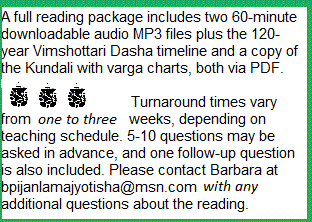
[How Readings Work] = [Sample Sacred Jewels Ratna Recommendation] = [Seva]
 file update:
27-Nov-2025
file update:
27-Nov-2025
Copyright 1994-2094 by Barbara Pijan LamaContact [How to Request a Jyotishavidya Reading]
Barbara Pijan Lama Jyotishavidya Vedic Astrology Surya Sun Chandra Moon Mangala Mars Budha Mercury Guru Jupiter Shukra Venus Shani Saturn Rahu Ketu Graha Planets Dasha Timeline Calendar Nakshatra Navamsha Marriage Children Treasury Career Spiritual Wisdom Cycles of re-Death and re-Birth
The information on barbarapijan.com , including all readings and reports, is provided for educational purposes only. Wishing you every happiness and continuing success in studies!